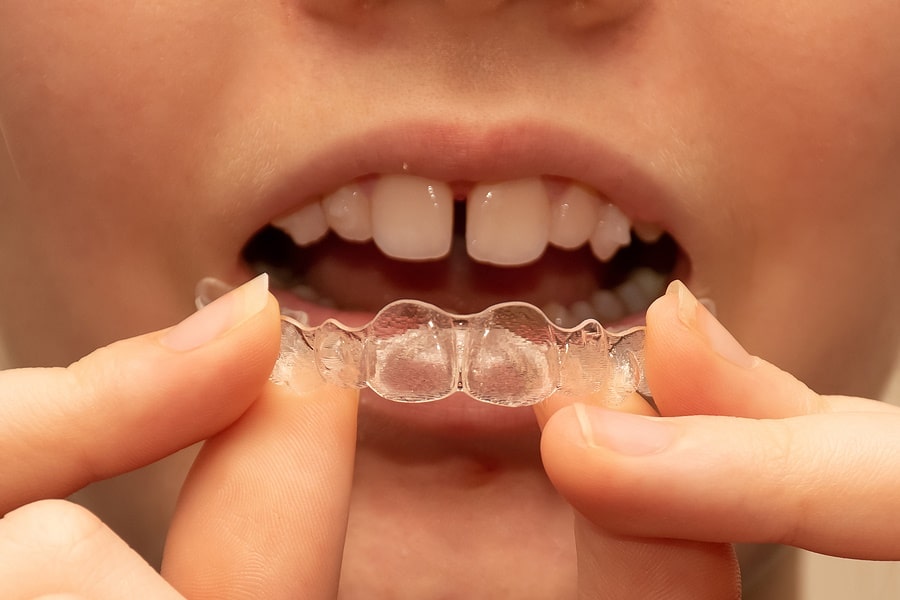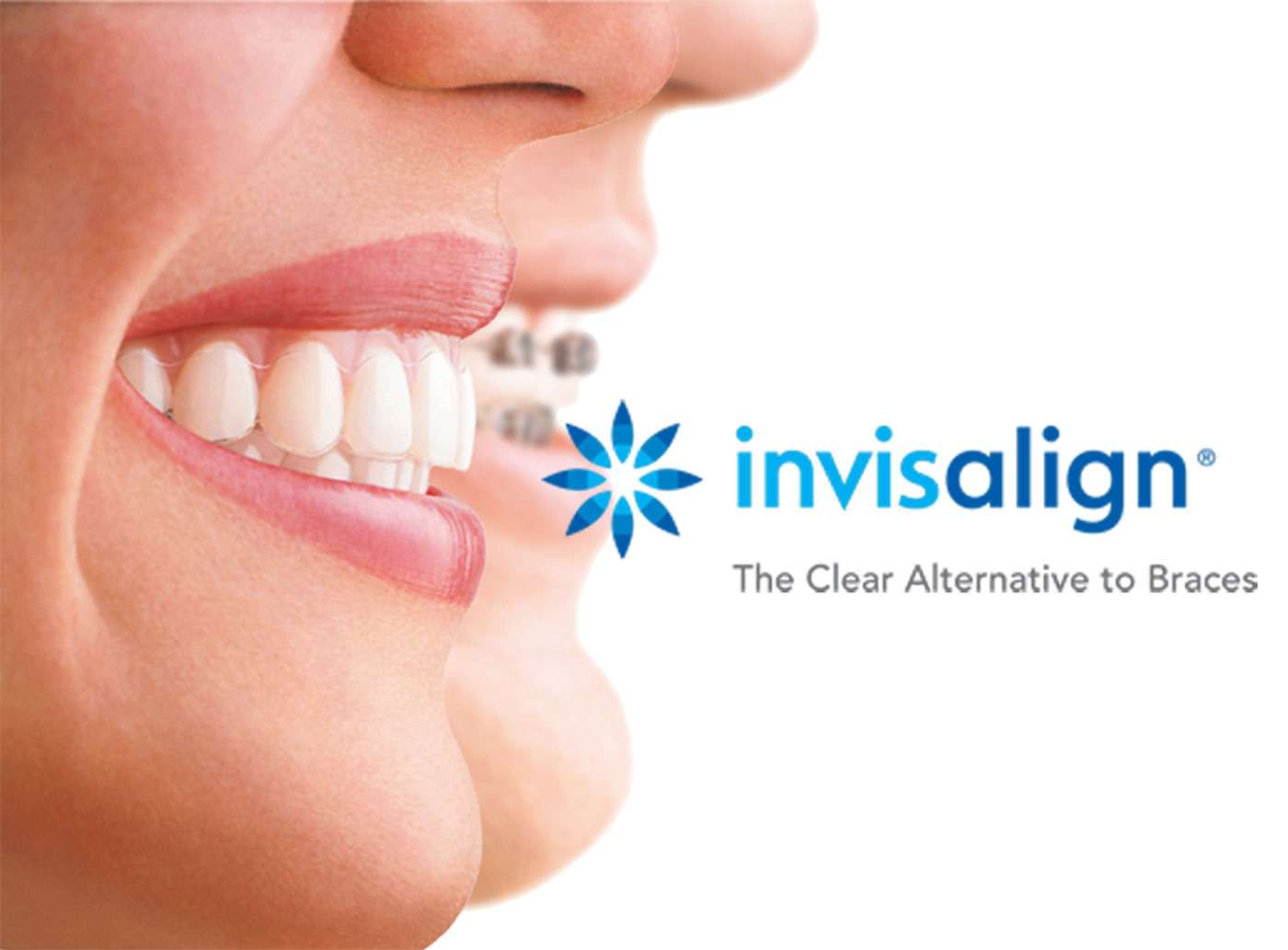Frequently Asked Questions About Invisalign: Everything You Required to Know
Wiki Article
Invisalign vs. Traditional Braces: Which Alternative Is Right for You?
When taking into consideration orthodontic therapy, the selection in between Invisalign and conventional dental braces presents several essential factors that merit mindful analysis. Invisalign offers a very discreet alternative with detachable aligners, while typical dental braces provide a more noticeable yet effective solution for serious misalignment. Each alternative encompasses distinctive benefits and drawbacks connected to visual appeals, comfort, treatment period, and cost. Recognizing these subtleties is vital for making an informed choice that aligns with your personal preferences and lifestyle. The question continues to be: which choice will ideal fulfill your orthodontic requirements and assumptions?Review of Treatment Options

On the other hand, typical braces are composed of steel brackets and cables that are bound to the teeth. This approach applies constant stress in time to accomplish positioning. While reliable for complicated orthodontic problems, conventional braces need routine brows through for changes and can pose difficulties in maintaining oral health as a result of the trouble of cleaning around cords and braces.
Both options have their merits, and the selection usually hinges on certain dental problems, way of life preferences, and person conformity. Ultimately, seeking advice from an orthodontic specialist is important for figuring out the most ideal therapy strategy customized to private requirements. Comprehending the nuances of each option can significantly affect the general success of orthodontic treatment.
Visual Factors To Consider
A substantial factor influencing the option between Invisalign and standard dental braces is the aesthetic appeal each therapy supplies. Invisalign aligners are crafted from clear plastic, making them basically unnoticeable when put on.On the other hand, standard dental braces are composed of metal braces and cords, which can be more noticeable. While innovations in orthodontic technology have resulted in the advancement of smaller braces and colored elastics, traditional braces still keep an even more obvious account. For some individuals, the visibility of braces may discourage them from seeking needed treatment.
Eventually, the option between Invisalign and standard braces may hinge on individual choices regarding appearances. Patients that prioritize discernment frequently favor Invisalign, while those that are much less worried regarding exposure may choose traditional dental braces. Comprehending the visual ramifications of each option is important for making an educated decision that lines up with one's way of life and preferences.
Convenience and Convenience

In terms of ease, Invisalign aligners are detachable, making it possible for patients to enjoy their preferred foods without limitation and maintain optimal dental hygiene. Brushing and flossing are streamlined, as the aligners can be obtained throughout these routines, whereas traditional braces call for mindful maneuvering around cords and braces.
In contrast, typical dental braces necessitate regular changes, making them much less convenient for those with hectic routines. Overall, the comfort and benefit of Invisalign make it an enticing option for many people looking for orthodontic therapy.
Therapy Duration and Effectiveness
While both Invisalign and traditional dental braces are efficient in dealing with dental imbalances, the duration of treatment can differ substantially in between the two options. Usually, Invisalign therapy can take anywhere from 12 to 18 months, depending upon the intricacy of the instance. The clear aligners work by slowly moving teeth into their desired positions, and normal follow-ups with an orthodontist assistance guarantee progress stays on course.
In contrast, typical braces usually require a longer commitment, generally varying from 18 months to 3 years. This is because of their set nature and using brackets and cords, which can be extra reliable for complex situations and severe imbalances (Invisalign). The therapy performance of typical dental braces is well-documented, as they permit specific adjustments and greater control over tooth motion
Ultimately, the choice between Invisalign and standard dental braces might depend upon both the anticipated treatment duration and the particular dental issues available. Consulting with an orthodontist is important, as they can supply tailored recommendations based upon visit this site right here private demands, making sure the chosen technique straightens with desired results and timeframes.
Cost Comparison and Insurance Policy Options
Cost plays a significant role in the decision-making process for individuals taking into consideration orthodontic treatment, whether selecting Invisalign or conventional braces. Usually, the cost of Invisalign arrays from $3,000 to $8,000, while typical dental braces usually set you back between $2,000 and $6,000. Elements affecting these expenses include the intricacy of the instance, the period of treatment, and geographical place.Insurance coverage can dramatically affect out-of-pocket expenditures. Many dental insurance policy strategies supply partial protection for orthodontic therapies, however the specifics can differ commonly. It is essential for people to assess their insurance plan to figure out the degree of protection for either choice. Usually, conventional dental braces may be extra often covered by insurance plans contrasted to Invisalign, which some insurance companies categorize as an aesthetic procedure.
In addition, several orthodontic methods use versatile repayment plans, making both treatment choices extra accessible. People must ask about potential financing options and price cuts for ahead of time repayments. Assessing the complete expense, including insurance policy benefits and repayment strategies, is vital for making an informed decision that straightens with both aesthetic choices and budget plan considerations.

Final Thought
In summary, the choice between Invisalign and typical dental braces rests on numerous variables, consisting of visual preferences, comfort, therapy duration, and expense. Invisalign supplies a discreet, removable option that assists in dental hygiene and nutritional flexibility, while traditional braces might be much more ideal for intricate oral issues and frequently come with a reduced rate factor. Inevitably, consultation with an orthodontist is necessary to assess individual situations and identify one of the most proper therapy alternative for accomplishing ideal dental placement.When considering orthodontic treatment, the selection between Invisalign and typical dental braces offers numerous important aspects that merit cautious evaluation.Comparing Invisalign and typical dental braces exposes distinct treatment choices for orthodontic improvement.While both Invisalign and standard dental braces are efficient in correcting oral misalignments, the period of therapy can differ dramatically in between the two options.Expense plays a significant duty in the decision-making process for people thinking about orthodontic therapy, whether deciding for Invisalign or conventional dental braces.In recap, the choice between Invisalign and standard dental braces pivots on several elements, consisting of aesthetic preferences, comfort, treatment duration, and cost.
Report this wiki page